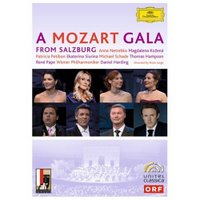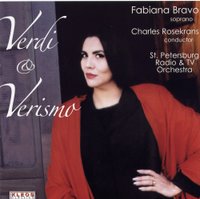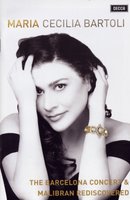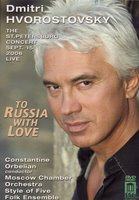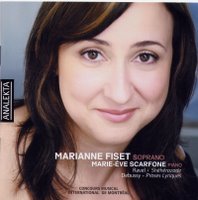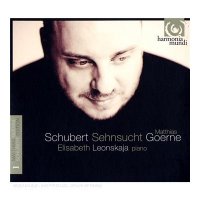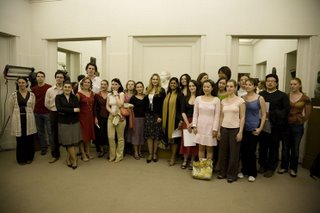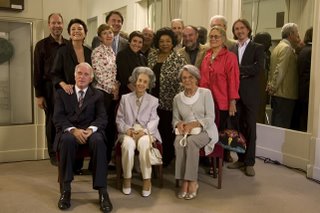CMIM – Jeudi 21 mai,
Dernière journée de l’épreuve quart de finale. Un après-midi riche en surprises et en découvertes. Dès le départ, le ténor coréen Seil Kim donne le ton. Ténor lyrique d’une grande musicalité, il interprète le Lied et l’oratorio avec beaucoup de couleurs et de raffinement et nous offre ensuite un extrait de Don Giovanni très expressif.
La deuxième surprise nous vient de la soprano canadienne Christina Tannous qui éblouit l’auditoire avec une voix magnifique d’un contrôle absolu, variant les couleurs avec un égal bonheur. Les airs tziganes de Dvorak qu’elle chante en tchèque sont captivants et elle réussit si bien à soutenir l’intensité que le public retient ses applaudissements entre chacun des airs. Comédienne accomplie, elle nous offre de mémoire un Kulesha très fantaisiste, s’inventant intérieurement une histoire que l’auditoire vit avec elle, comme une pièce de théâtre aux acteurs invisibles. Une interprétation qui lui a valu une ovation.
La découverte est venue avec la dernière candidate, la soprano américaine Angela Meade. D’une stature imposante, elle possède une voix puissante, une technique impeccable et l’aisance d’une chanteuse d’expérience. Magnifique dans l’opéra, elle chante le Lied de Strauss comme si elle chantait La Marschallin dans le Rosenkavalier. Détentrice en 2007 d’un 1er Prix Opéra au Concours International de chant, Hans Gabor Belvedere et en 2008 d’un 1er Prix au Concours international de musique José Iturbi, elle a fait ses débuts au Metropolitan Opera en mars 2008 et au San Francisco Opera. Avec une telle feuille de route et une carrière si bien amorcée, on peut se demander pourquoi une chanteuse continue à entrer dans des compétitions avec des jeunes qui attendent une rampe de lancement pour leur carrière.
Les autres candidats en après-midi : La soprano Jegyung Yang (Corée du Sud) et la basse Taehyun Jun (Corée du Sud), ainsi que la soprano canadienne Maghan Stewart-McPhee complétaient le programme de l’après-midi.
En soirée, avant les délibérations des juges, on entendit le ténor coréen Kijong Wi, la soprano américaine Yannick-Muriel Noah et le baryton américain Andrew Garland.
Voici, par ordre alphabétique, la liste des 16 candidats retenus pour la demi-finale :
Pascale Beaudin (Canada), Jennifer Borghi (Italie), Charlotte Corwin (Canada), Anthony Roth Costanzo (États-Unis), Catrin Aur Davies (Royaume-Uni), Andrew Garland (États-Unis), Stephen Hegedus (Canada), Falko Hönish (Allemagne), Seil Kim (Corée du Sud), Mariane Lemieux (Canada), Angela Meade (États-Unis), Yannick-Muriel Noah (Canada), Sidney Outlaw (États-Unis), Irina Shishkova (Russie), Maghan Stewart-McPhee (Canada), Jegyung Yang (Corée du Sud).
Pour connaître l’ordre de passage des candidats :
www.concoursmontreal.caVendredi, 22 mai1ère séance :19 h 30 : Anthony Roth COSTANZO, contreténor, États-Unis
20 h: Catrin Aur DAVIES, soprano, Royaume-Uni
20 h 30 : Pascale BEAUDIN, soprano, Canada
21 h : Pause
21 h 30 : Stephen HEGEDUS, baryton-basse, Canada
22 h : Mariane LEMIEUX, soprano, Canada
22 h 30 : Charlotte CORWIN, soprano, Canada
23 h : Fin
Samedi, 23 mai2e séance13 h 30 : Irina SHISHKOVA, mezzo-soprano, Russie
14 h 00 : Falko HÖNISCH, baryton, Allemagne
14 h 30 : Jennifer BORGHI, mezzo-soprano, Italie
15 h : Pause
15 h 30 : Sidney OUTLAW, baryton, États-Unis
16 h : Seil KIM, ténor, Corée du Sud
16 h 30 : Jegyung YANG, soprano, Corée du Sud
17 h : Pause
3e séance :19 h 30 : Maghan STEWART-McPHEE, soprano, Canada
20 h : Angela MEADE, soprano, États-Unis
20 h 30 : Yannick-Muriel NOAH, soprano, Canada
21 h : Andrew GARLAND, baryton, États-Unis
21 h 30 : Délibérations
>
2e journée>
1e journée- Renée Banville
----
Labels: MIMC, MIMC 2009, Montreal, voice

